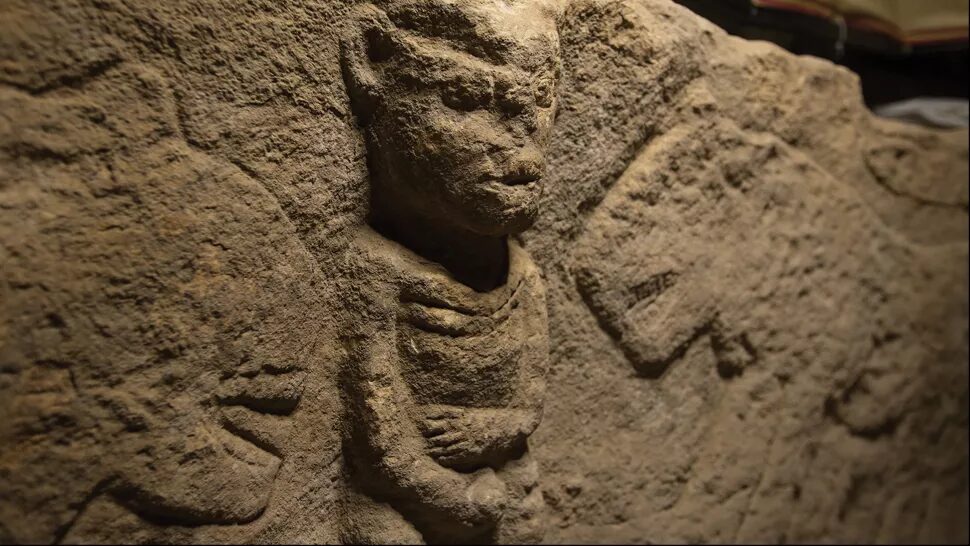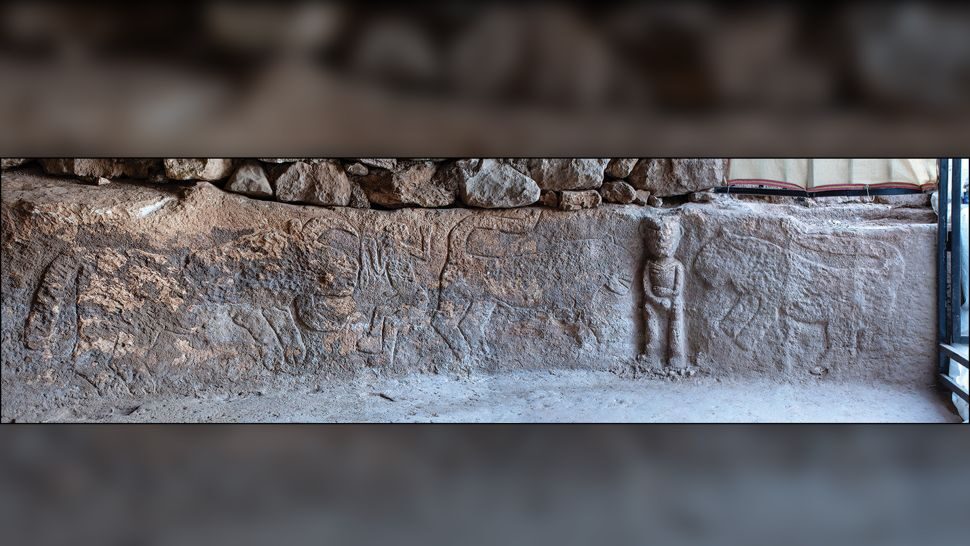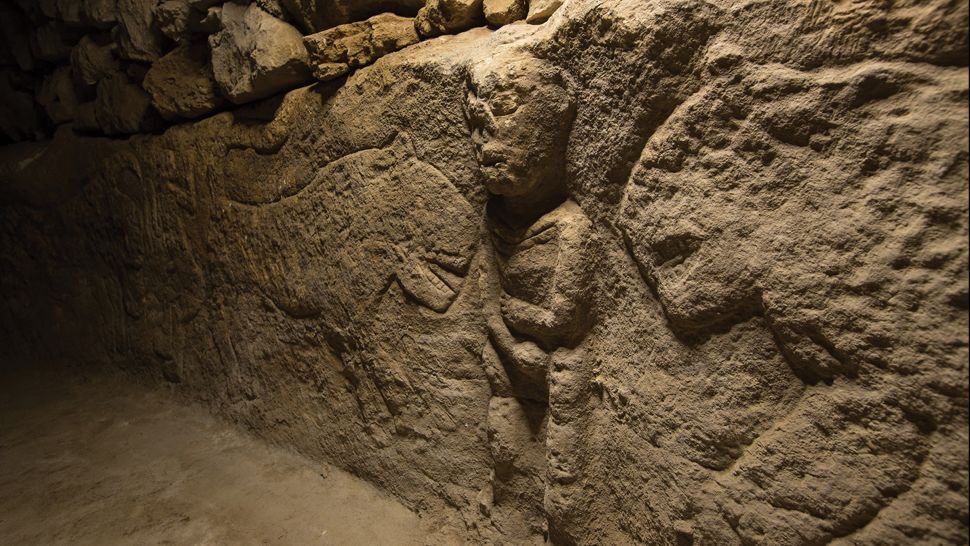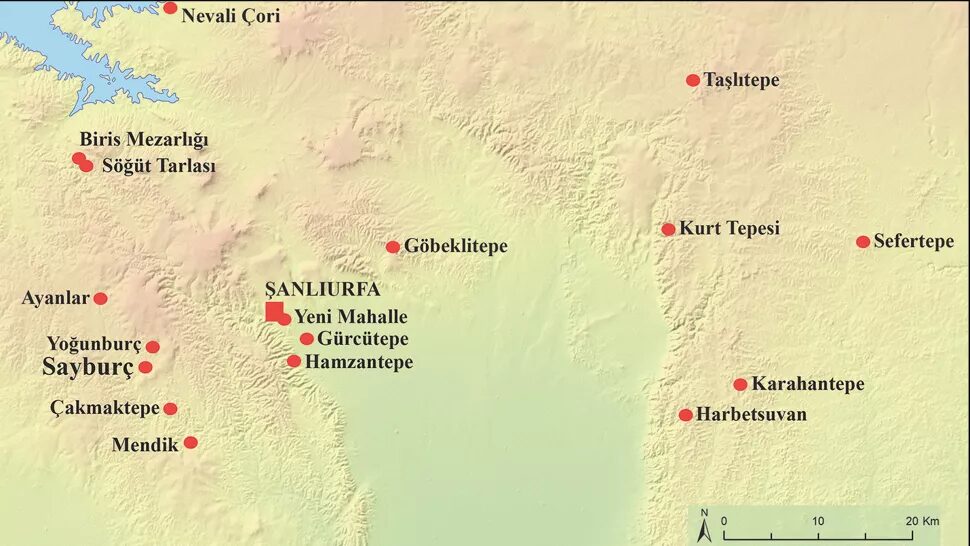
Archaeologists discovered the curious carvings on built-in benches within a Neolithic (or New Stone Age) building in the Urfa region. Measuring roughly 2.5 to 3 feet (0.7 to 0.9 meter) tall and 12 feet (3.7 m) long, the newly discovered rock-cut relief showcases two leopards, a bull and the two men — one grasping his phallus and the other holding a rattle or snake.
Whoever carved the wild creatures accentuated their dangerous, pointy parts — the leopards' teeth and the bulls' horns. But exactly what this narrative was meant to convey is lost to time, according to the study, which was published Thursday (Dec. 8) in the journal Antiquity.
Archaeologists found the carved scene at Sayburç, a Neolithic mound site roughly 35 miles (56 kilometers) east of the Euphrates River and 20 miles (32 km) north of the Syrian border. Sayburç dates to the ninth millennium B.C., a time when hunter-gatherers were shifting to farming and long-term settlements.

According to Özdoğan's research, there are two separate scenes that are meant to be read together as a narrative work of art. Starting from the left are shallow carvings of a bull and a man facing each other. The man has a "phallus-shaped extension on the abdomen," and his "raised, open left hand has six fingers, while the right holds a snake or rattle," she wrote in the paper. The second scene involves two leopards — mouths open, teeth visible, long tails curled up toward the body — facing a man who is carved almost in 3D. He stares into the room rather than to the side and holds his phallus with his right hand.

In an email to Live Science, Özdoğan explained that "in places such as Göbekli Tepe and Sayburç, there is a masculine world and its reflections — male predatory animals, phalluses, and male depictions. The ones at Sayburç are different in that they are depicted together to form a scene."

Notroff added that this find may help archaeologists better interpret Neolithic iconography in Turkey. "Unfortunately, while the Neolithic hunter may have easily recognized its message," he said, "we are still lacking an understanding of the actual narrative."
The communal building at Sayburç has only been partially excavated so far. While Özdoğan is confident in the interpretation of the building as a gathering area, she is not sure what they will find as they finish digging. "There may be a scene or other elements on the opposite side" of the bench, she told Live Science.
Notroff is enthusiastic about what future excavations could tell archaeologists about art and society in ancient Turkey. This finding at Sayburç is a "fascinating new insight," he said, and he's "looking forward to seeing more results of ongoing research and excavations on other early Neolithic sites in the Urfa region and beyond."



It’s not new insight at all. It’s confirmation of what was/is already known by clerisy/intelligentsia. Finally getting the semiotic Phallus worship truth out. It has to do with ancient belief’s of Seeds, Serpent Worship, GAIA worship, Sun, Moon & Earth we’re the first known trinity to Neolithic nomadic tribes/hordes/cultures etc. Fingers crossed they continue to reveal more of that whole Anatolia Turkey Steepe area & Younger Dryas event impact on that whole area.